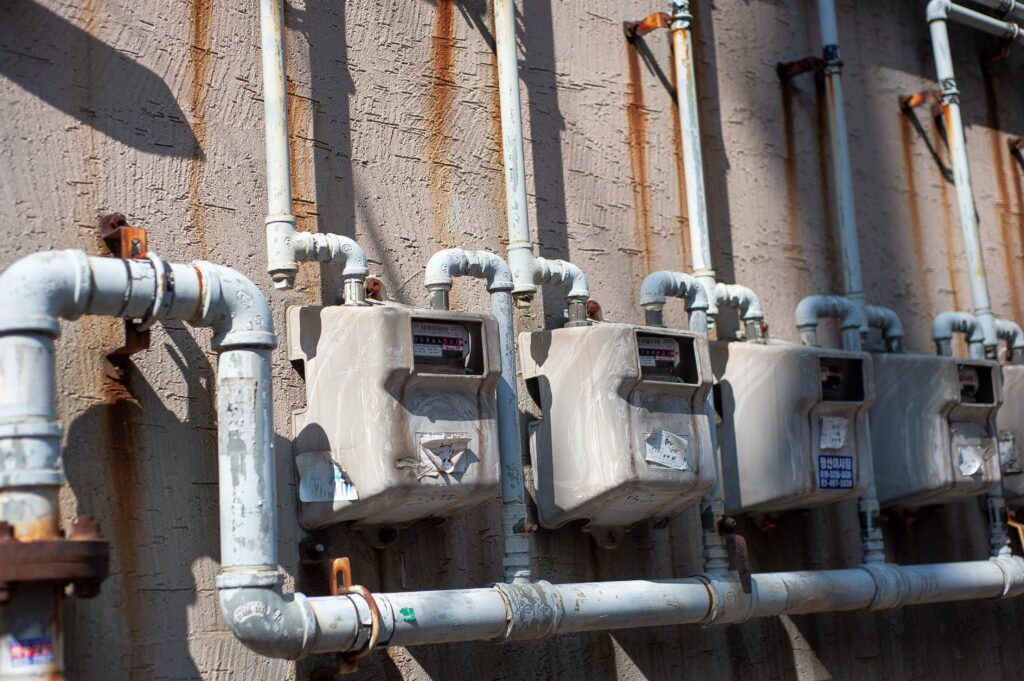Plumbing issues can be a real headache, and the last thing you want is to deal with the same problem all over again. That’s where warranties come in, providing you with peace of mind and financial protection. In this article, we will take you through the ins and outs of plumbing warranties, explaining everything you need to know to make informed decisions and ensure the longevity of your plumbing system. Whether you’re a homeowner or a business owner, understanding warranties in plumbing work is essential for safeguarding your investment and avoiding any unnecessary costs down the line. Let’s dive right in!



This image is property of images.unsplash.com.
The Importance of Plumbing Warranties
Plumbing systems are an essential part of any home or building, providing us with access to clean water and proper waste disposal. However, like any other mechanical system, plumbing can develop issues over time. That’s where warranties come in. Plumbing warranties play a crucial role in protecting homeowners from unexpected repair costs and ensuring that their plumbing systems remain in good working condition. In this comprehensive article, we will explore the role, benefits, and history of plumbing warranties, as well as the different types and elements they encompass.
The Role of Warranties in Protecting Homeowners
A warranty acts as a safety net, giving homeowners peace of mind by guaranteeing that if their plumbing system fails or requires repairs within a certain period, the associated costs will be covered. It is essentially a written contract between the homeowner and the warranty provider, outlining the terms and conditions of coverage. The primary role of warranties is to protect homeowners from bearing the financial burden of unexpected plumbing issues.
Benefits of Having a Plumbing Warranty
Having a plumbing warranty offers numerous benefits to homeowners. First and foremost, it provides financial protection against unforeseen plumbing repairs or replacements, which can be quite expensive. With a warranty in place, homeowners can rest assured knowing that they won’t have to worry about footing the bill for these unexpected costs. Additionally, warranties often include provisions for regular maintenance, ensuring that the plumbing system remains in optimal condition and reducing the likelihood of major problems occurring. They also provide homeowners with access to professional services for repairs, ensuring that the work is done correctly and effectively.



This image is property of images.unsplash.com.
History and Evolution of Plumbing Warranties
The concept of warranties has been around for centuries, with early records dating back to ancient civilizations such as the Babylonians and Romans. However, plumbing warranties as we know them today have evolved significantly over time. In the past, warranties were typically short-term and limited in coverage. As plumbing technology advanced and homeowners’ expectations grew, warranty offerings expanded to provide longer coverage periods and more comprehensive protection. Today, plumbing warranties are an integral part of the industry, offering homeowners peace of mind and reassurance in their investments.
Basic Elements of a Plumbing Warranty
Understanding the basic elements of a plumbing warranty is crucial for homeowners to make informed decisions and effectively utilize their coverage. Typical warranty terms consist of a coverage period, which indicates the duration for which the warranty is valid, and a list of specific coverage items, which outline the components or systems included in the warranty. It is essential to carefully review these terms to ensure that the homeowner knows what is covered and what is not. Additionally, warranties may include mechanisms for fulfilling claims, such as a process for submitting claims and the responsibilities of both the homeowner and the warranty provider.
Types of Plumbing Warranties
Plumbing warranties can be categorized into several different types, each offering specific coverage and benefits. These include manufacturer warranties, contractor warranties, extended warranties, and service warranties. Understanding the differences between these types will help homeowners choose the most suitable warranty for their needs.
Manufacturer Warranties
Manufacturer warranties, as the name suggests, are provided by the manufacturers of plumbing fixtures and appliances. These warranties typically cover defects in materials or workmanship and vary in duration, depending on the manufacturer and the specific product. Manufacturer warranties may offer full coverage or be prorated, meaning the coverage decreases over time. It’s essential to read the manufacturer warranty carefully to understand the terms and conditions before relying on it for claims.
Contractor Warranties
Contractor warranties, also known as workmanship warranties, are offered by the plumbing contractors who install or repair the plumbing system. These warranties usually cover the labor and workmanship related to the specific plumbing project. They differ from manufacturer warranties in that they focus on the quality of the installation or repair work rather than the materials themselves. Contractor warranties are typically shorter in duration compared to manufacturer warranties but can vary depending on the contractor and the scope of the project.
Extended Warranties
Extended warranties, also known as service contracts, are additional coverage plans that homeowners can purchase to extend the warranty period beyond the manufacturer or contractor warranty. These warranties offer peace of mind by covering potential issues that may arise after the initial warranty period. However, it’s important to carefully evaluate the cost and coverage of extended warranties, as they may not always provide significant advantages compared to the cost of repairs.
Service Warranties
Service warranties, also called maintenance agreements or service contracts, differ from other types of warranties as they focus on preventive rather than corrective measures. These warranties typically provide routine maintenance and inspection services for the plumbing system, ensuring its optimal performance and longevity. Service warranties are particularly beneficial for homeowners who want to proactively maintain their plumbing systems to minimize the risk of major repairs or replacements.



This image is property of images.unsplash.com.
Understanding Manufacturer Warranties
Manufacturer warranties are integral to the plumbing industry, providing homeowners with assurance in the quality of the products they purchase. These warranties typically cover defects in materials or workmanship, guaranteeing that the product will perform as intended. It’s important to note that manufacturer warranties vary in duration, with some offering lifetime coverage and others having a specified term. To fully benefit from a manufacturer warranty, homeowners should familiarize themselves with the terms and conditions outlined by the specific manufacturer.
Insights into Contractor Warranties
Contractor warranties complement manufacturer warranties by offering coverage for the labor and workmanship associated with plumbing installations or repairs. While manufacturer warranties focus on the products themselves, contractor warranties focus on the quality of the installation or repair work. These warranties can vary in duration, ranging from a few months to a couple of years. Contractor warranties provide homeowners with peace of mind knowing that the work performed by the contractor is guaranteed, and any issues arising from the installation or repair will be addressed.
Extended Warranties Explained
Extended warranties offer homeowners the opportunity to extend the coverage period beyond the initial warranty provided by the manufacturer or contractor. They can be purchased for an additional cost and are designed to provide continued protection for the plumbing system. Extended warranties often cover a wide range of issues, including repairs, replacements, and even preventive maintenance. However, it’s essential to carefully evaluate the cost and coverage of extended warranties, as they may not always be cost-effective compared to the potential cost of repairs or replacements.
Interpreting Warranty Terms and Conditions
When reviewing a plumbing warranty, it’s important to pay attention to key terminologies and understand the fine print. Common terminologies include coverage period, which indicates how long the warranty is valid, and coverage items, which list the specific components or systems covered. Additionally, it’s crucial to be aware of any exceptions or exclusions outlined in the warranty. These exceptions may limit coverage for certain situations or components. In case of any confusion or uncertainty, homeowners should seek professional advice to ensure they fully understand their rights and responsibilities.
How to File a Plumbing Warranty Claim
In the event that a plumbing issue arises within the coverage period of a warranty, it is important to know how to file a successful warranty claim. The first step is to identify the type of warranty in place, whether it’s a manufacturer warranty, a contractor warranty, or an extended warranty. Next, homeowners should gather all necessary documentation, such as proof of purchase, warranty documents, and any supporting evidence of the issue. Following the specific procedures outlined in the warranty agreement, homeowners can then submit their claim to the warranty provider. It’s important to be thorough in documenting the issue and providing all requested information for a smooth claim process. In case of claim rejection, homeowners should review the denial letter and consider seeking professional assistance to appeal or explore alternative solutions.
Common Misunderstandings about Plumbing Warranties
Although plumbing warranties provide valuable protection, there are some common misunderstandings worth clarifying. One of the most prevalent misconceptions is the belief in a “lifetime warranty.” However, it’s important to note that lifetime warranties often have limitations and exclusions, so homeowners should carefully review the warranty’s terms and conditions. Another common misunderstanding pertains to the interpretation of “parts and labor” coverage. While some warranties may cover both parts and labor, others may only cover one or the other. Homeowners should review the warranty to understand what is included. Additionally, warranty contracts may include exceptions or exclusions that are not clear to homeowners. In such cases, seeking professional advice can help clarify any uncertainties.
Tips for Maintaining Validity of Plumbing Warranty
To ensure that a plumbing warranty remains valid and fully effective, homeowners should adhere to proper care and maintenance practices. Regularly maintaining plumbing fixtures, such as faucets and toilets, can prolong their lifespan and minimize the risk of issues. Following the guidelines provided in the warranty agreement, homeowners should also ensure they stay within the warranty’s conditions. This may involve using specified cleaning products, avoiding DIY repairs, or scheduling regular professional inspections and maintenance. By proactively taking care of their plumbing system and adhering to warranty conditions, homeowners can maximize the benefits of their warranty coverage.
In conclusion, plumbing warranties play a vital role in protecting homeowners from unexpected plumbing issues and costly repairs. By understanding the different types of warranties, the terms and conditions, and how to file a warranty claim, homeowners can make informed decisions and effectively utilize their coverage. With proper care, maintenance, and adherence to warranty conditions, homeowners can ensure their plumbing systems remain in optimal condition and enjoy the peace of mind that comes with comprehensive warranty protection.
